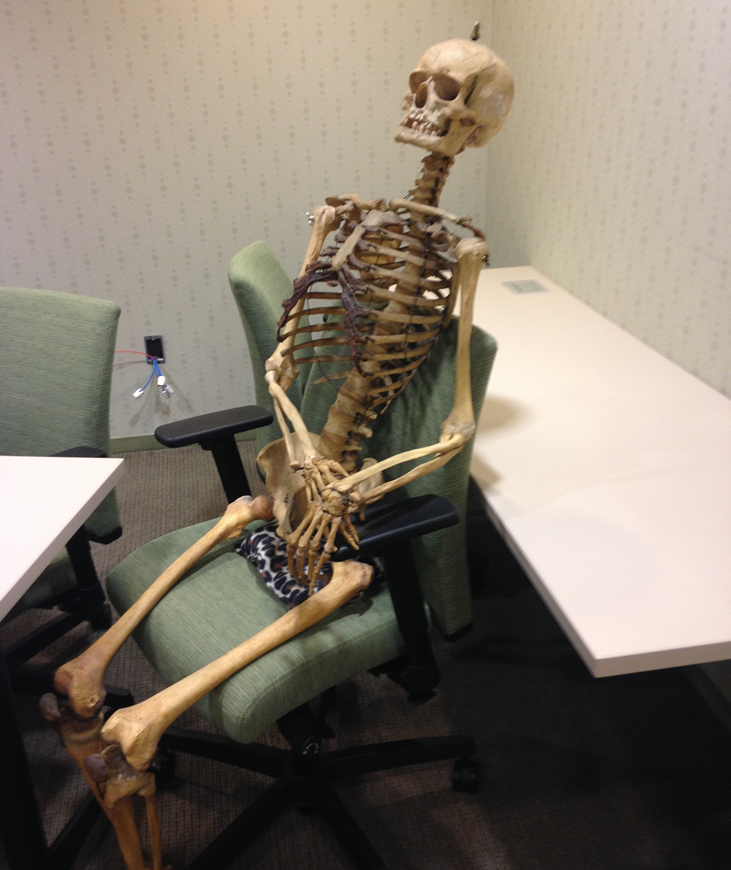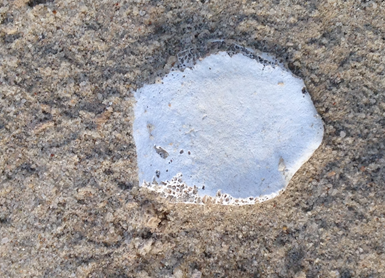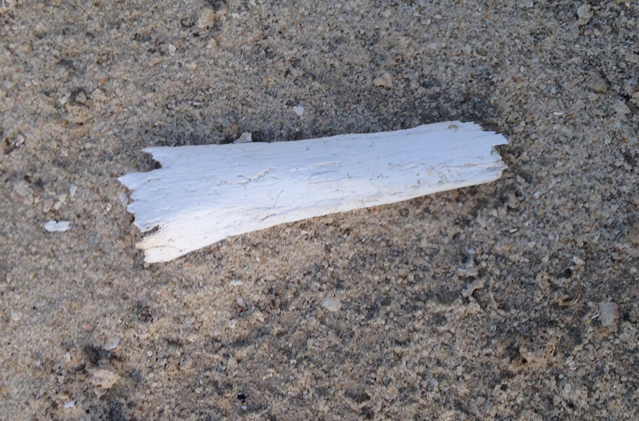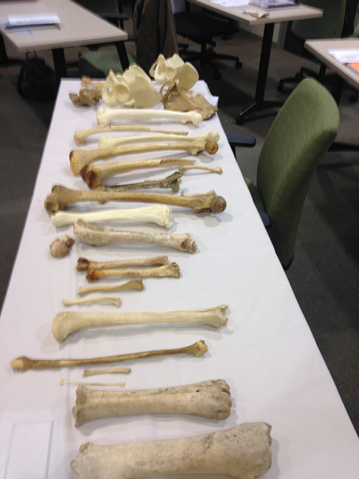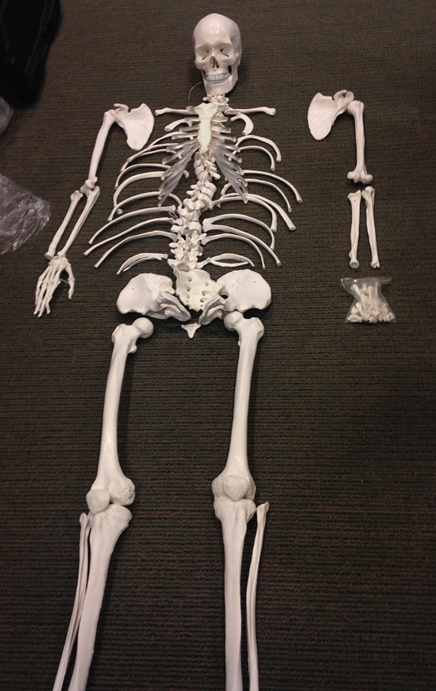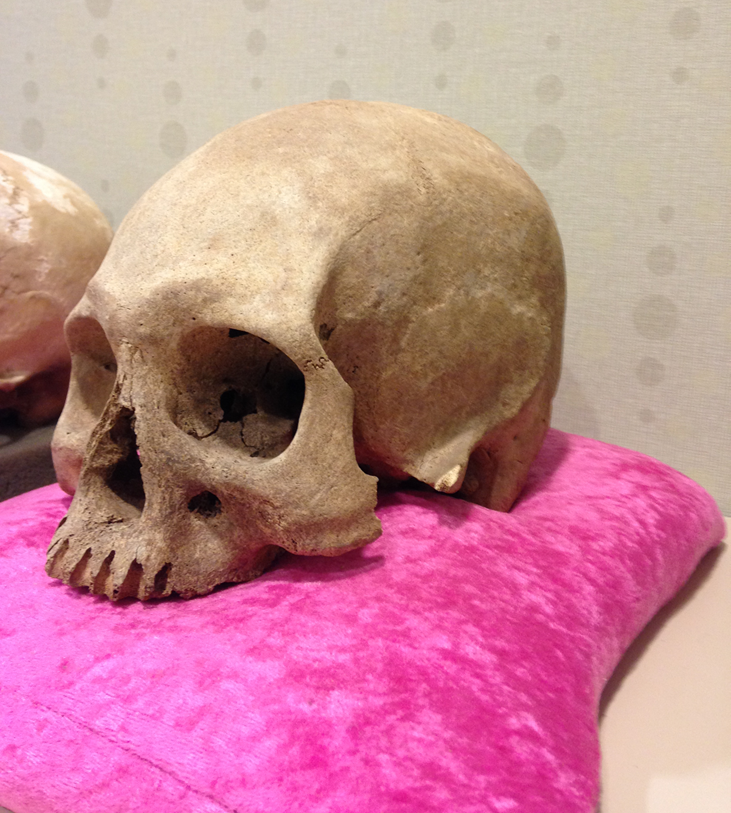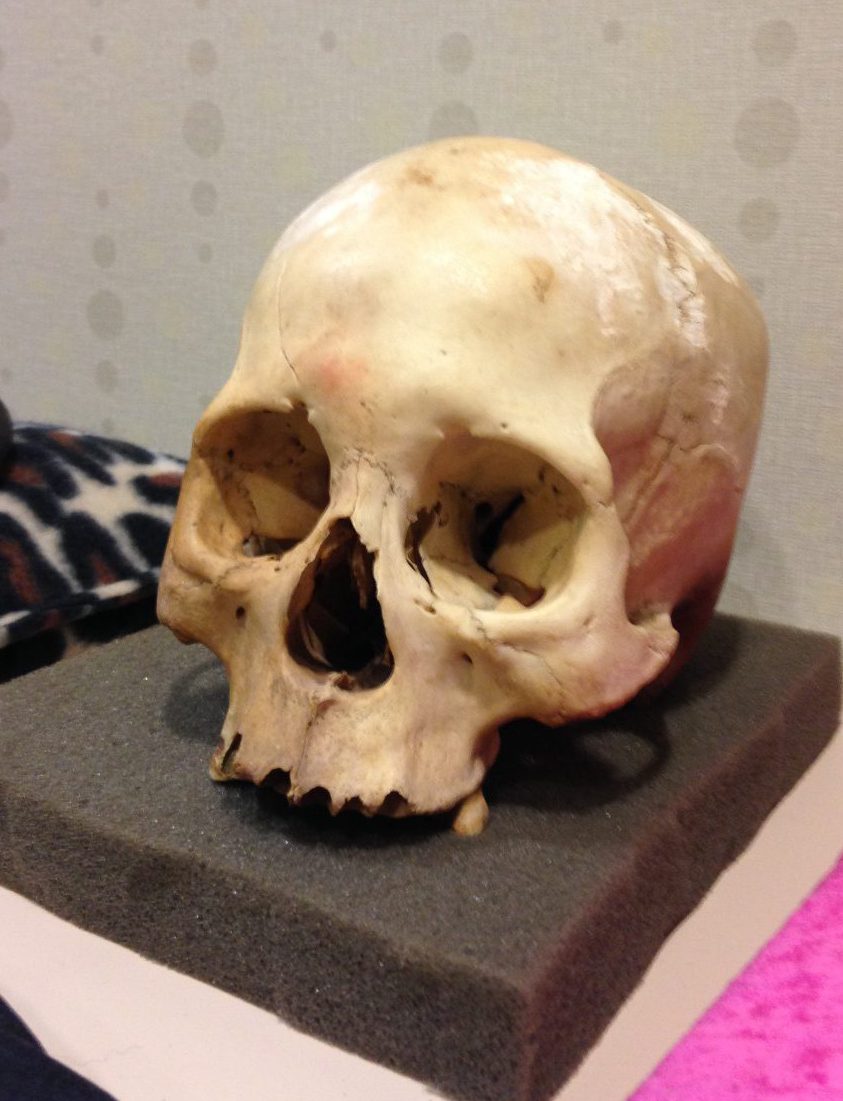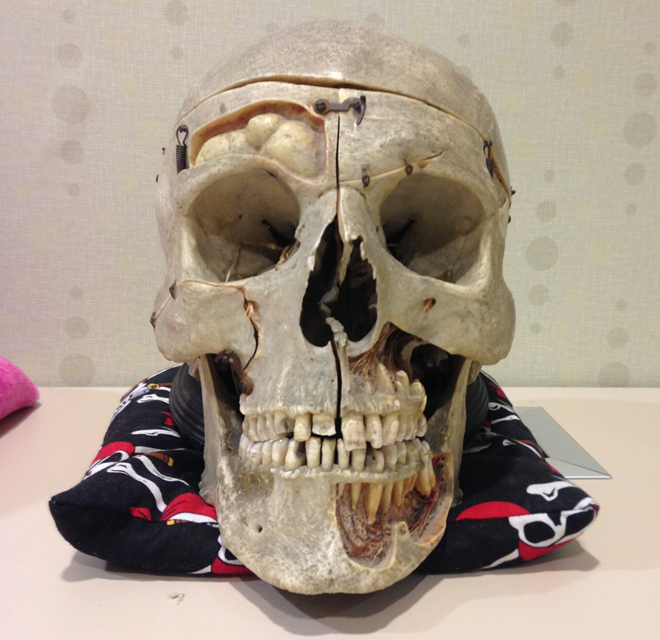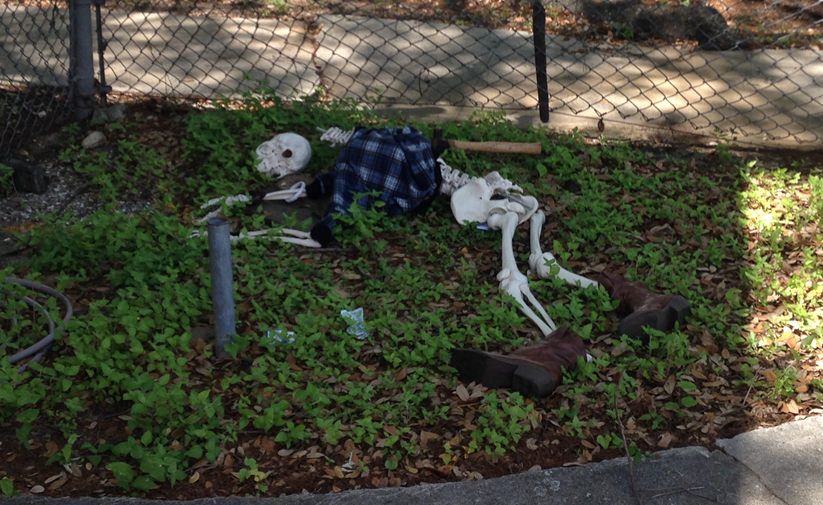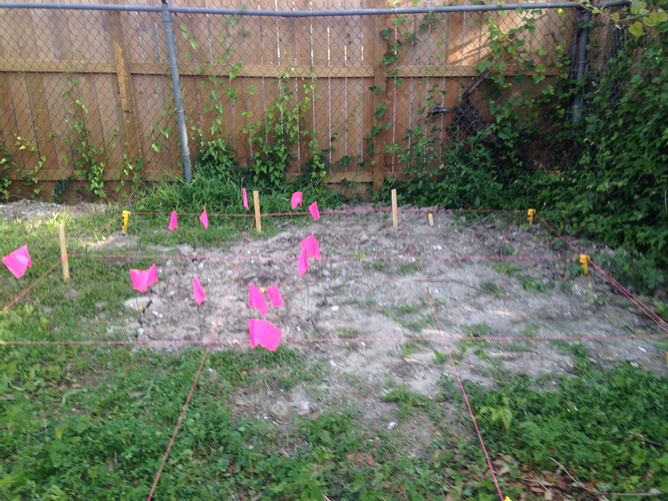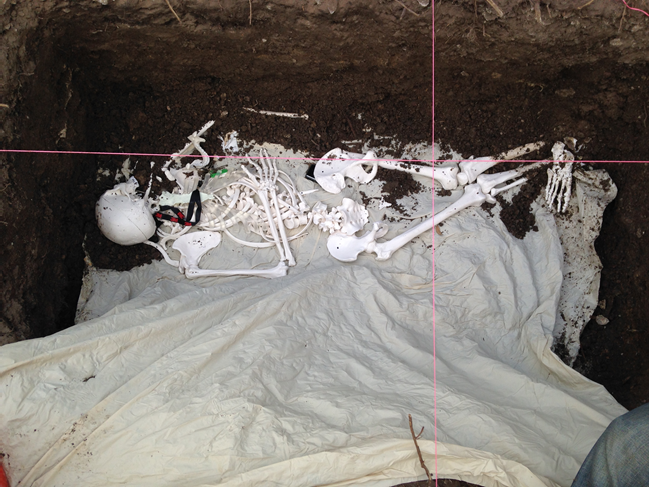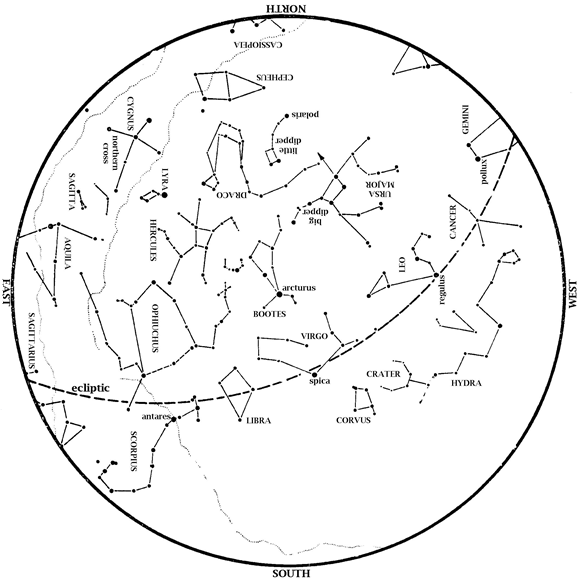At the Houston Museum of Natural Science, we understand the value of education, as it is an integral part of our overall mission. The value placed on education extends to museum employees as well. Whether through offering CPR training to employees or encouraging participation in continuing education in disciplines in which they are already trained, there is always opportunity for growth. I benefited from this forward-thinking mindset in April. Let me tell you a little bit about this amazing opportunity.
I participated in the Forensic Anthropology and Skeletal Recovery workshop presented by the Forensic Science Center. This 40-hour experience was spent learning to identify bones as human or animal, creating biological profiles using skeletal remains, and recovering buried remains along with associated evidence. In addition to furthering my education, I was able to meet some interesting people, like my new friend pictured here.
Forensic anthropology is the application of anthropology to criminal investigations. The forensic anthropologist is often called in to help in the recovery of skeletal remains and to create biological profiles using bones to help identify an unknown individual. Let me tell you a little bit about how it works.
First thing’s first — if what looks like a bone is found, whether it could be something else must be determined. There are a surprising number of things that look like bone. Even anthropologists can be fooled from a distance. Below is a picture taken on my trip to Saudi Arabia; the item is about the size of a half dollar. At first glance, I thought it was bone, but on closer inspection, I decided it was not. It is most likely a piece of coral, fashioned into a circular shape many years ago, by human hands. So, not bone . . . still cool. I can live with that.
The fact that it was found next to the piece below, which is absolutely bone, made it much more likely to assume the above piece was bone as well.
Once you determine the specimen is a real bone, you need to find out if it is human or from some other type of animal. This is harder than you might think. All mammals have the same skeletal template. This means all mammals have all of the same bones, in approximately the same places. However, the morphology of the bone, which is its shape, and how the bones relate to each another, differs between humans and other animals. Bone is classified as human or not by considering its size, shape, and structure.
We examined two tables filled with all kinds of bones, both human and other. What an amazing experience! You can read about identifying human bone, but you really don’t get a feel for the process until you’ve had the opportunity to touch them and hold them in your hands. Check out one of the tables, filled with long bones.
Ok, great, let’s assume the bone we’ve been talking about is real and it’s human. Now what? Well, we need to establish what elements of the skeleton are present and how many individuals are associated with the burial. This is done by laying the bones out in the order you would find them in a living person. This is called the anatomical position. When done, you will know what parts are missing and it also allows the opportunity to scan each bone for trauma.
Turns out that laying out a skeleton isn’t too hard, until you get to the ribs (and hands and feet, but we weren’t required to do that). My partner and I get points for being clever. We discovered a number on the side of each rib. This made things go much faster! What can I say? I’m competitive. Given time, we would have gotten it right without the help of numbers; I say work smarter, not harder.
The next question — are the remains modern or ancient? Police will not be interested in an ancient Native American burial, but they will be interested in any human remains less than 50 years old. Whether bones are ancient or modern can often be determined by associated artifacts. Cell phone? Most likely modern. Pottery shards? A good bet it’s ancient.
The next order of business is to identify the person to whom the skeleton belongs. This is done by creating a biological profile, which includes the estimated age, sex, ancestry, and stature of the individual. Knowing this information helps investigators narrow the amount of potential candidates from the missing persons database. When possible matches are found, dental X-rays or unique identifiers such as healed fractures or bone abnormalities are used to make a positive identification.
Next, we reviewed how to determine probably ancestry and sex using the skull, and then worked with a variety of specimens of varying ancestry, both males and females. This particular skull was a real challenge.
Some were a little easier.
And some skulls were as interesting as they were simple to identify. Check out this awesome specimen. It was modified into a teaching aide. Sections of bone were removed and then replaced with hinges so they could open to reveal substructures and close to observe surface structures. Notice where a portion of the jaw was removed to illustrate the root structure of the teeth. Absolutely fascinating!
Later we took a field trip to the crime scene house where they train law enforcement personnel. So cool! We worked on surface recovery of skeletal remains in the yard surrounding the house. This included gridding out the entire crime scene into one-meter squares using stakes and string. Then we got busy documenting the scene using photography and sketches.
After the initial preparations, we cleared the entire area of grass and debris. This was quite an undertaking, but I did discover three .22 shell casings because of our careful work. Our skeleton was rocking some awesome boots, as you can see below.
The last two days we spent on the recovery of skeletal remains from a clandestine burial. This is hard work! The first step was to find the grave using a probe to penetrate the ground looking for disturbed soil. Disturbed soil is more loosely packed than undisturbed soil, making the probe slide easily into the ground. Once located, we gridded out our work space, removed grass and debris, and collected surface evidence. Pink flags indicate the likely outer limits of the burial site.
It was then time to move a ton of dirt, a little at a time. All dirt was sifted, after removal, to collect evidence that may have been missed during excavation. Precise measurements were taken for anything found associated with the burial. It could be tedious at times, but it really got exciting when things started to turn up! We found our skeleton about four feet down. That’s a lot of digging when using a hand trowel, a paint brush, and bamboo skewers!
I’m excited to put my new training to work as I prepare brand new forensic science Labs-on-Demand classes and a brand new CSI camp experience for Xplorations Summer Camp 2017. It will be amazing for students to be able to interact with real bones and engage in the kinds of processes used by practicing forensic anthropologists!


